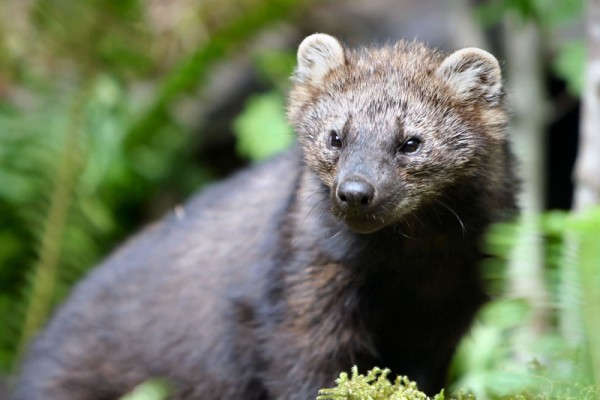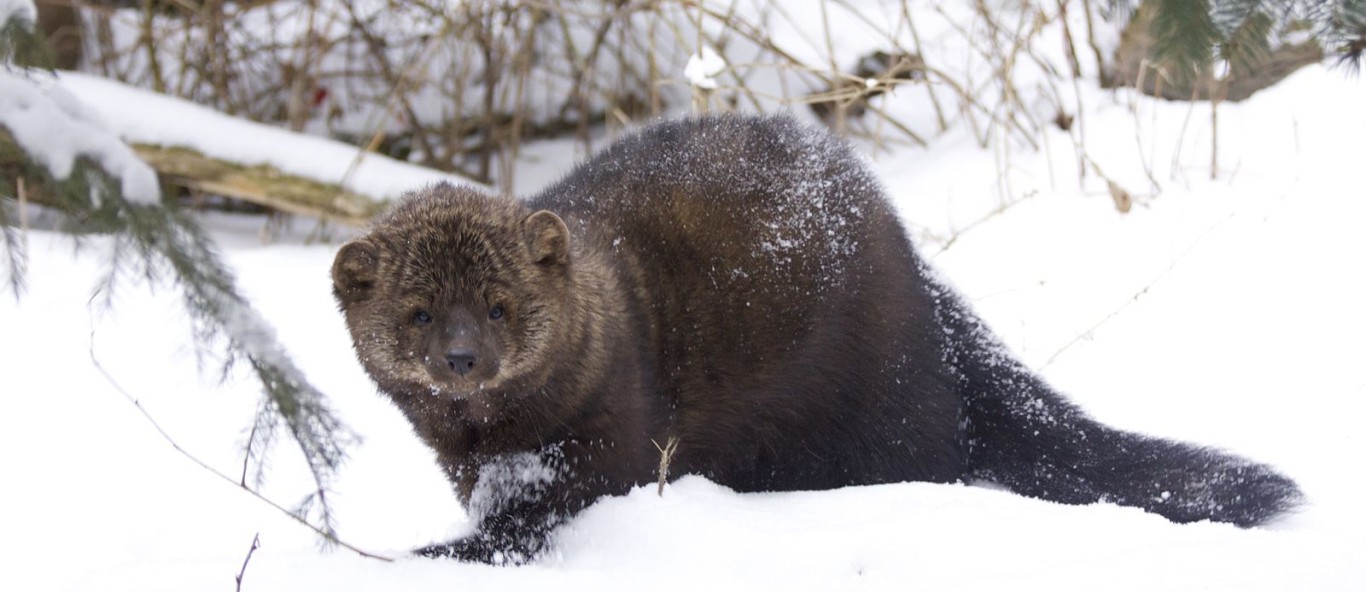Fisher

Fisher
Pekania pennanti
- Fishers are also sometimes called “pekan”, “pequam”, “wejack” and “woolang”. These are names derived from aboriginal languages.
- Fishers have often also been called “Fisher Cats”, although they are not cats. They are more closely related to martins and other types of weasels.
- They are one of the few animals able to kill and eat porcupines.
Population: Fishers are widespread throughout the northern forests of North America. They have been hunted by trappers since the 18th century, due to the high value of their fur. Their fur was in such high demand, that these animals were extirpated from some areas in the United States, including Wisconsin, in the 20th century. They had to be reintroduced to Wisconsin woodlands in the 1950’s, and it took about 30 years for their population to replenish itself to ultimately allow for a limited hunting season. Their population is stable, especially in Northern Wisconsin, but you must carry a special permit to hunt fishers.
Habits: Fishers are not social and prefer to live alone rather than in groups. They are known as “crepuscular” animals, meaning that are typically most active at dawn and dusk. They are agile tree climbers, although they spend most of their time hunting for food along the forest floor.
These animals will look for shelter in hollow trees, logs, rock crevices, and dens of other animals. During the wintertime, these animals will travel through long and narrow tunnels that burrow under the snow.
Fishers have very keen senses of smell, sight, and hearing. They communicate with each other with the help of scent marking, especially as it relates to mating and marking territories.
Diet: Fishers are omnivores, which means they can eat a variety of foods, like insects, nuts, berries and mushrooms. They have been known to feed on a wide variety of small animals as well, but their primary prey is snowshoe hares and porcupines. They are one of the main predators of the porcupine. A porcupine’s sharp quills cover their body, except for their head and stomach. Fishers will attempt to get the porcupine on their backs to expose their defenseless bellies, but more often will resort to taking bite attacks at the animal’s face until the it dies. This battle has been known to last hours at times, until the Fisher can deliver a fatal bite.
Mating and Young: These creatures are solitary, except when they are searching for a mate. They use scent glands on their feet to leave traces of themselves that potential mates can follow. They typically mate in late March-early April. They are among the mammals that can delay egg implantation until more suitable conditions arise, and will sometimes delay for 10 months until mid-February of the following year. After gestating for about 50 days, the female gives birth to 1-4 kits, and will remain with their mother and litter mates until they are 5 months old. Females reach reproductive maturity at 1 year of age, while males become reproductively mature when they are 2 years old.
Information from: https://animalia.bio/fisher & https://dnr.wisconsin.gov/topic/WildlifeHabitat/furbearers
To download this information, Click Here.

